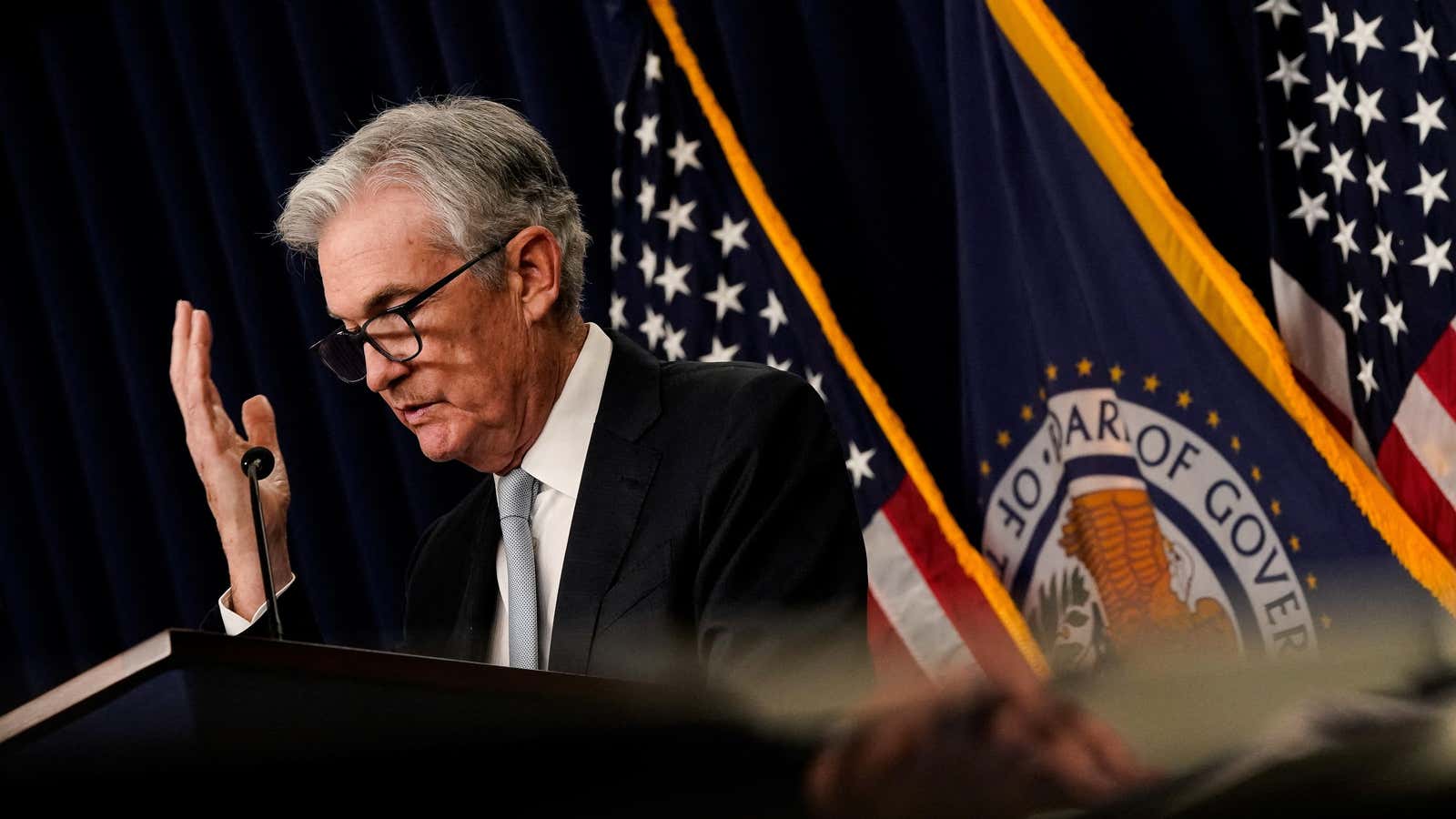As recently as last week, Federal Reserve chair Jerome Powell signaled the central bank is prepared to quicken the pace of interest rate increases, to a level that would likely exceed Wall Street forecasts.
But following the recent collapse of three banks—Silicon Valley Bank (SVB), Signature Bank, and Silvergate—the Fed’s path suddenly looks uncertain.
The closure of California-based SVB on March 10 marked the second-biggest bank failure in US history; Signature was shut by regulators in New York over the weekend. On Sunday evening (March 12), the Fed, together with the US Treasury Department and the Federal Deposit Insurance Corporation (FDIC), said depositors of SVB and Signature would have full access to their money, while a new emergency lending facility would ensure the protection of deposits across the regulated US banking landscape.
What the Fed’s next move depends on
Will the Fed follow through later in March with additional rate hikes after promising more? Economists and analysts say it is unlikely, or uncertain at best.
The decision presumably depends on what kind of ripple effects the collapse of SVB, and the response by regulators, has on the rest of the financial sector.
While SVB’s failure was predicated on several factors, its problems were exacerbated by rising US interest rates meant to constrain the economy and reduce inflation. The startups making up a vast portion of SVB’s customer base were burning through cash faster, the bank warned shortly before its collapse; meanwhile, and a fire sale of bonds in the bank’s portfolio was a less effective response to deposit withdrawals than it would have been in the recent past, as rising rates have reduced bond prices.
“It’s always a tradeoff because when you increase rates, it can cause problems,” said Itay Goldstein, an economics professor at Wharton. “It is indeed fair to assume that if these problems are going to get stronger, if we’re going to see more and more indicators that the rate hikes are causing turmoil in financial markets, in the financial system, that the Fed may rethink and recalculate the path.”
Why the Fed could pause interest rate hikes
Some economists said it’s unlikely the Fed will deliver higher rates at its March 22 meeting. “The Fed’s full attention today and the rest of this week, depending on how things go, is what’s happening in financial markets and the fallout of SVB,” said Claudia Sahm, an independent economist who previously worked at the Federal Reserve. She added that the consumer price index report due out tomorrow (March 14) will be a “sideshow.”
Skanda Amarnath, the executive director of labor research and advocacy group Employ America, agreed, raising a bigger question about what the Fed’s interest rate hikes have actually achieved and predicting the Fed will “probably need to take some time to observe what’s actually going on.”
Goldman Sachs analysts said in a research note Sunday they no longer expect the Fed to raise rates at its March 22 meeting in light of the recent stress in the banking sector, with considerable uncertainty for the path beyond March. But the investment firm had left unchanged its expectations for of 25 basis points each in May, June, and July, and it now expects the Fed’s benchmark rate to peak at 5.25% to 5.5%, up from the current 4.75%.
Essentially, Goldman is calling how long it will take to get the market to settle down, before the Fed can raise rates again, said Sahm. “Monday we could just be freaking out; by Friday we might have this a little more under control,” she said.
The Fed also could slow down its interest rate increases
The Fed raised interest rates last year at the fastest pace since the 1980s. Following the SVB fallout, some economists said future rate increases may not be as sharp.
“[B]ank failures such as SVB…are a warning that things can break when rates move up sharply—this argues for policy makers moving more gradually on tightening from here,” noted Capital Economics, a macroeconomics analytics company.
Itay agreed. “If it’s back to business as usual, then we may as well see that rates will continue to go up—but not that much,” he said.
There’s a week and a half to go until the Fed meets, and, as we’ve seen this past weekend, much can change before then.
